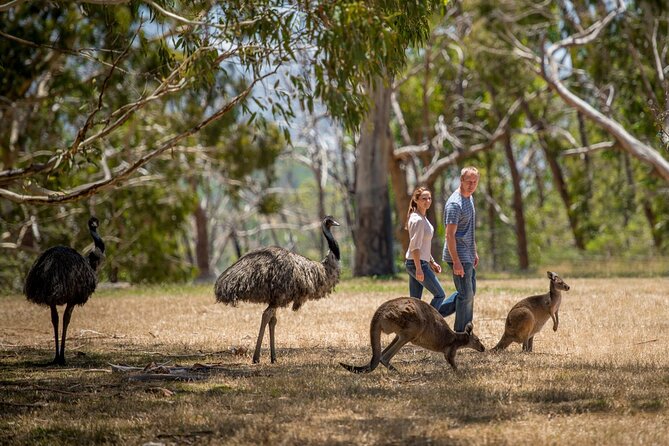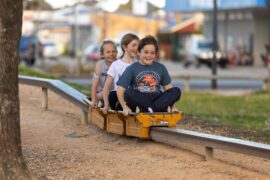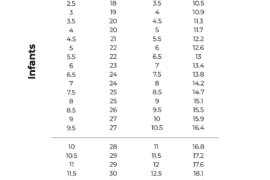“`html
A Parent’s Guide: From Adelaide to Cleland Wildlife Park
Hey there, awesome parents! Are you looking for the perfect family day out that combines fun, education, and the great outdoors? Look no further than a trip from Adelaide to Cleland Wildlife Park! In this super handy guide, I’ll walk you through everything you need to know to make your family’s adventure as smooth and enjoyable as possible!
Getting Ready for Your Trip
Before you embark on your wildlife journey, here’s a checklist to ensure you have everything you need:
- Comfortable shoes for walking
- Weather-appropriate clothing (don’t forget hats and sunscreen!)
- A camera to capture those adorable animal moments
- Snacks and water bottles
- A backpack to carry all your essentials
Remember, preparation is key to a stress-free day with the kiddos!
How to Get There
Located just 20 minutes from Adelaide’s city center, getting to Cleland Wildlife Park is a breeze. Here are your options:
By Car
Fasten those car seats and enjoy a scenic drive through the Adelaide Hills. There’s ample parking available at the park, so no worries there.
Public Transport
If you prefer to leave the car at home, Adelaide Metro offers public transportation options that include buses and trains. Plan your trip using their online journey planner for a seamless experience.
What to Expect at Cleland Wildlife Park
As you step into Cleland Wildlife Park, get ready for a wild time! The park offers an up-close experience with some of Australia’s most iconic animals. Here’s a sneak peek of what you’ll find:
- Interactive animal encounters
- Educational talks and feedings
- Open-space enclosures for animal viewing
- Playground areas for active kids
- Café facilities for when you need that coffee fix
Each section of the park is designed with families in mind, making it easy for stroller navigation and kid-friendly fun.
Fun Animal Experiences for the Family
Are your kids eager to meet some fuzzy friends? Here are some highlights you won’t want to miss:
- Feed a kangaroo – purchase animal food at the entrance and watch your little one’s eyes light up as they feed these gentle hoppers.
- Hold a koala – under the supervision of trained staff, experience the magic of holding one of Australia’s cuddliest creatures.
- Discover reptiles – for the brave and curious, check out the reptile encounters and learn about these fascinating reptiles.
These experiences not only create wonderful memories but also foster a love for wildlife and conservation from a young age.
“`

5 Things Every Parent Should Know When Preparing for Adelaide to Cleland Wildlife Park
1. Understanding the Wildlife Park's Layout
Prior knowledge of the park's layout can be a game-changer. Cleland Wildlife Park is quite expansive, and knowing the various zones and what they offer can help you prioritize your time and ensure you visit all the ‘must-see’ exhibits. Download a map from the park's website or pick one up at the entrance to strategize your day.
2. Timing Your Visit
The best times to visit are early in the morning or late afternoon when the animals are most active. Also, feeding times are incredibly popular, so be sure to check the schedule and plan to arrive early for these experiences. Certain interactive sessions might require advanced booking, so it's always smart to check ahead.
3. Dietary Considerations
While there is a café on-site, you might have specific dietary needs or preferences. You're welcome to bring your own picnic to enjoy in the designated areas. Just remember, do not feed human food to the animals as it can be harmful to them.
4. Educational Opportunities
Encourage your children to engage with the educational elements of the park. Many displays provide interesting facts about the animals' habitats, diet, and conservation status. There are also scheduled keeper talks that are informative and can inspire children to learn more about wildlife and environmental conservation.
5. Weather Preparedness
Adelaide's weather can be unpredictable. Be sure to check the forecast and dress accordingly. Layering is often a good approach, as mornings can be cool, while afternoons might get quite warm. Sun protection is essential, as you'll spend a lot of time outdoors. Furthermore, some walkways might not be sheltered, so a raincoat and waterproof shoes might be handy during wetter months.
Bonus Tip: Photography Ideas
Don't just aim for the usual snapshots; Cleland Wildlife Park is an excellent place for creative photography. Capture your child's awe-filled face as they watch a kangaroo hop by, or the family’s first time holding a koala. Remember to respect the animals' space and use your camera's zoom to get close-up shots without disturbing them.
Setting Expectations
Before you go, have a chat with the kids about the rules and respect for the animals. It's important for them to understand that while the animals are accustomed to humans, they are still wild creatures that deserve our respect and care. Teach them about gentle handling, quiet voices, and why it's important not to chase or stress the animals.
Ticketing Information
Buying tickets online can save you time on the day. There are often family discounts and package deals available, so explore all options. Remember, by supporting Cleland Wildlife Park, you are also supporting wildlife conservation efforts.
Reviews from Other Parents
It's always helpful to hear about other families' experiences. Check out online forums, blogs, or the park's social media pages to get tips and insights that might make your day even better. Parents typically share little-known tips that can be very helpful, like the best picnic spots or the quiet times to visit certain attractions.
. For more information see here
Disclaimer
The articles available via our website provide general information only and we strongly urge readers to exercise caution and conduct their own thorough research and fact-checking. The information presented should not be taken as absolute truth, and, to the maximum extent permitted by law, we will not be held liable for any inaccuracies or errors in the content. It is essential for individuals to independently verify and validate the information before making any decisions or taking any actions based on the articles.




